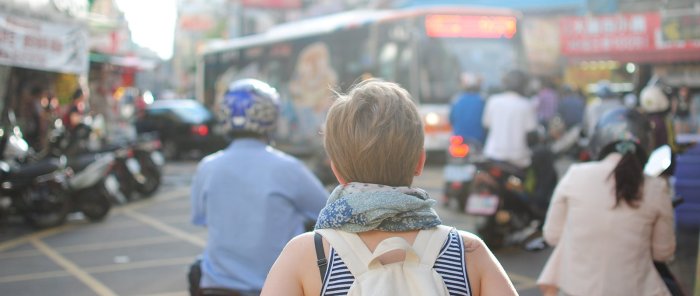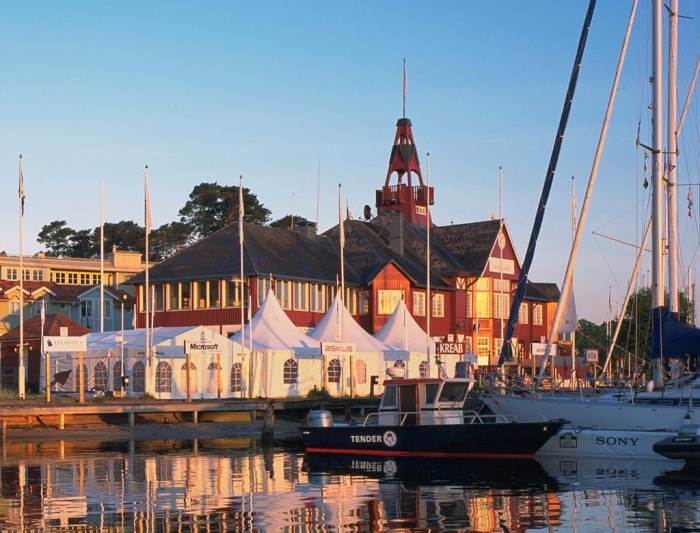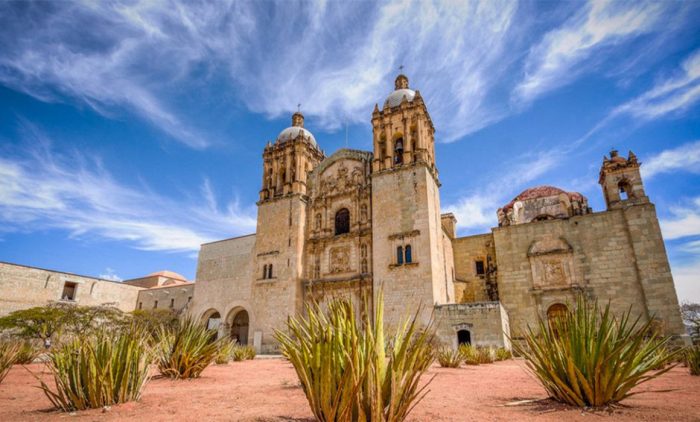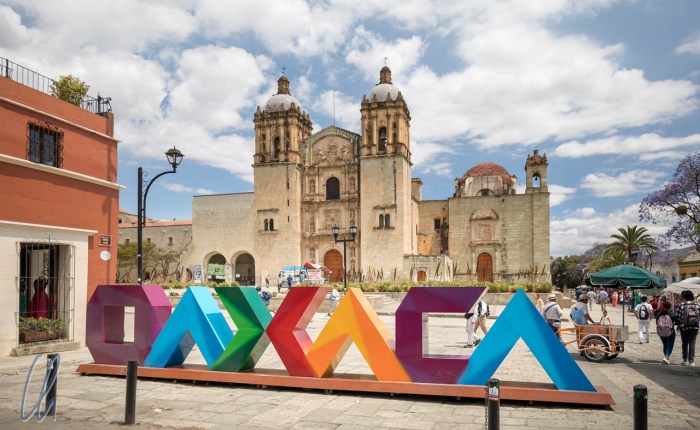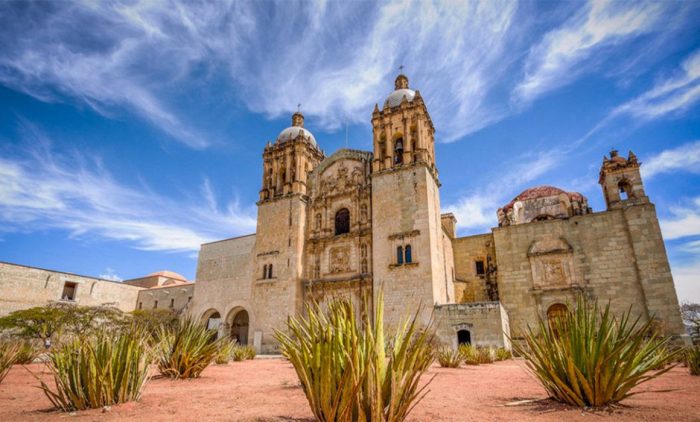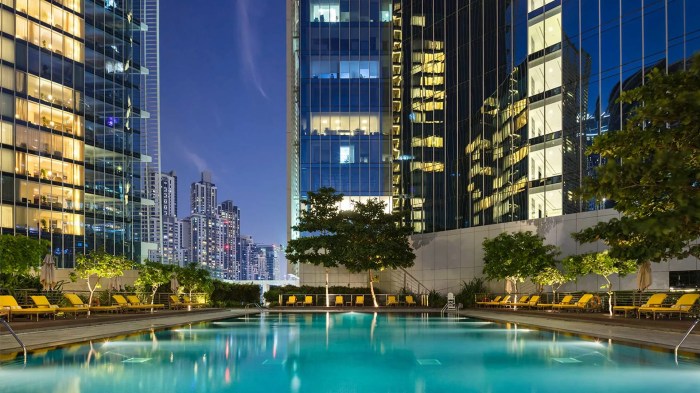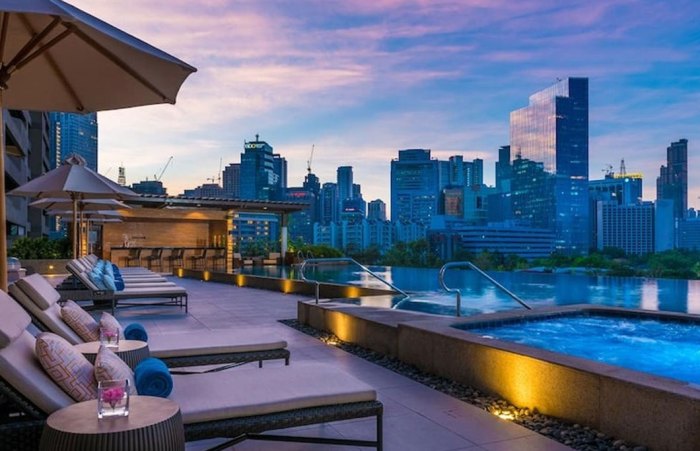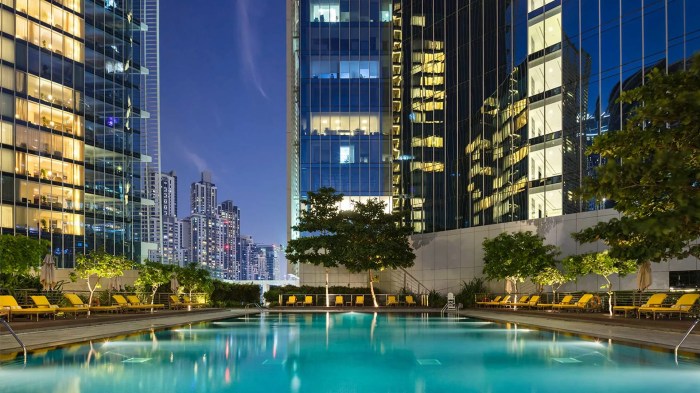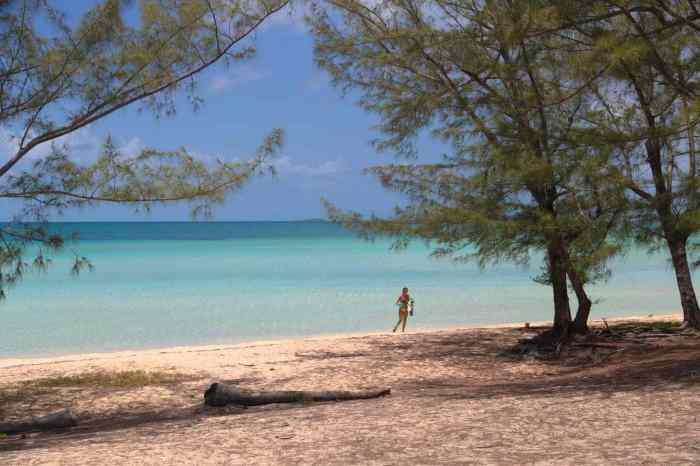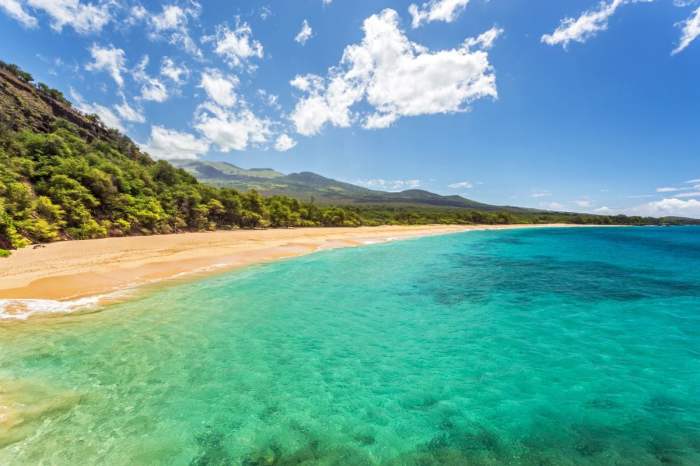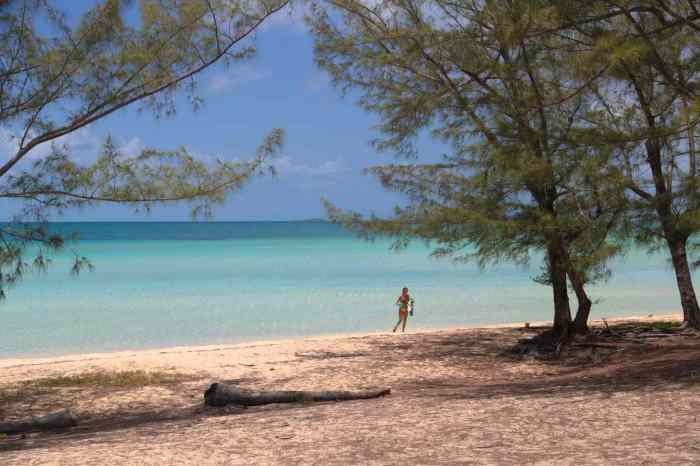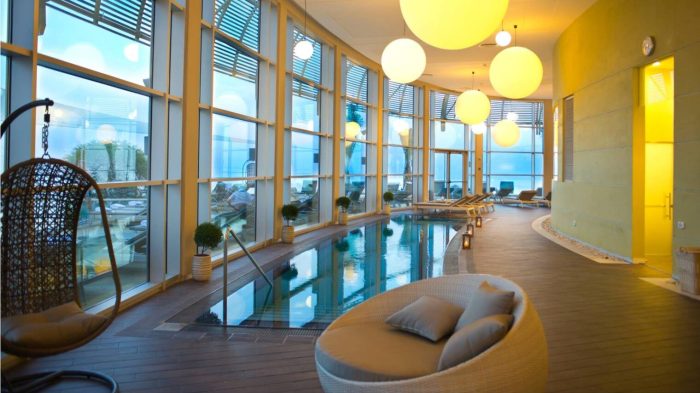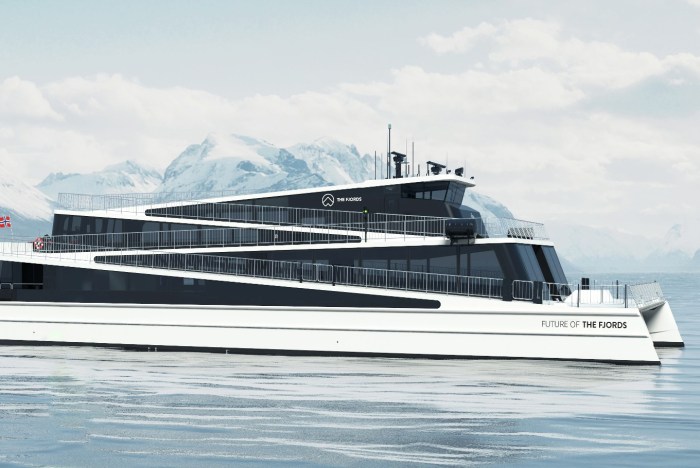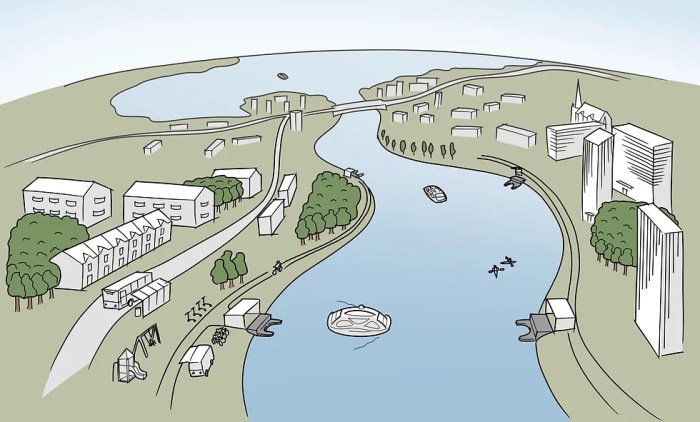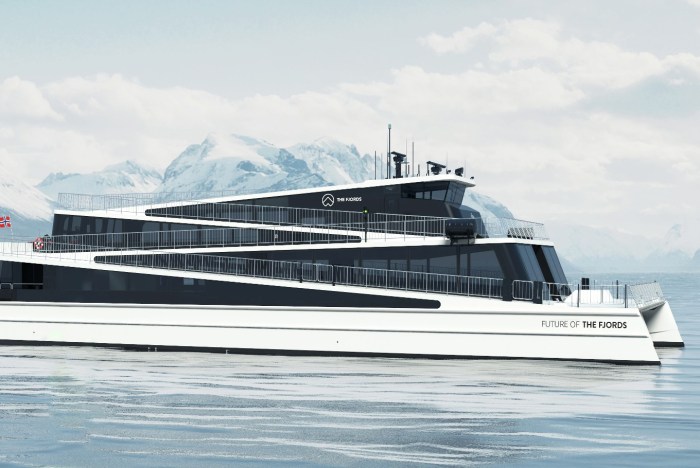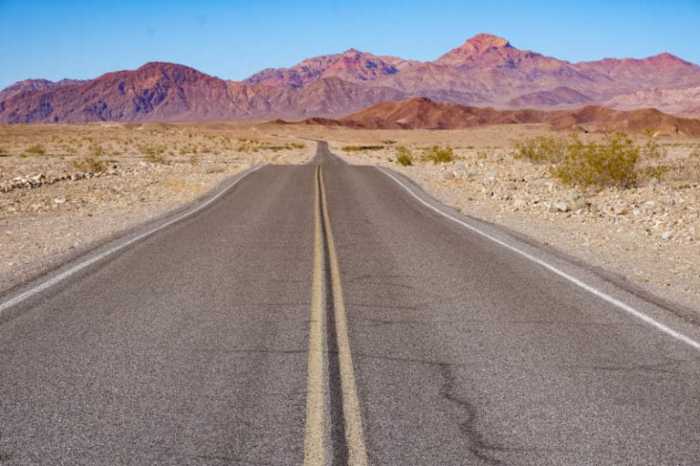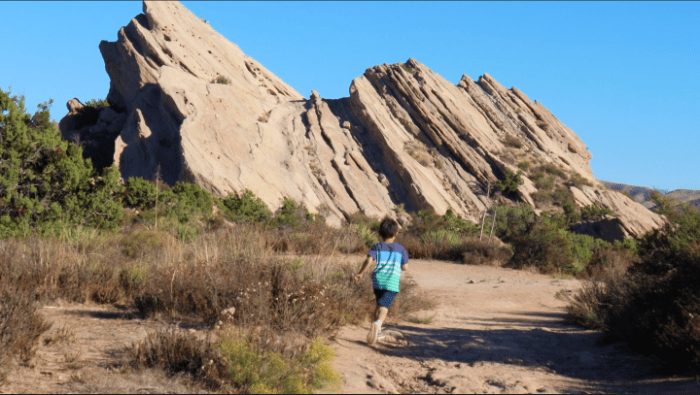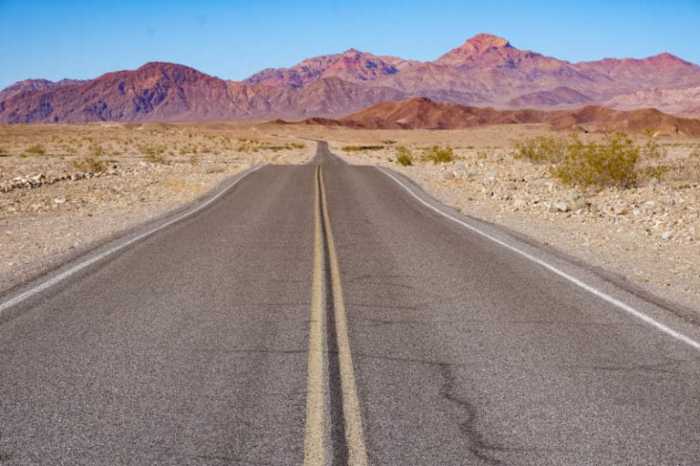How to protect yourself when traveling is crucial for any adventure. From navigating potential dangers to safeguarding your belongings and personal data, this guide offers practical strategies for a safe and enjoyable trip. We’ll cover everything from personal safety measures and travel planning to staying alert, protecting your digital information, and understanding cultural nuances.
This comprehensive guide dives into practical advice, empowering you to make informed decisions and prioritize your safety throughout your travels. We’ll look at everything from choosing secure accommodations to handling emergencies and even specific travel scenarios like solo travel or backpacking.
Personal Safety Measures
Traveling can be an exhilarating experience, but it’s crucial to prioritize your safety. This section delves into practical measures to enhance your security and well-being while exploring new destinations. Knowing what to expect and how to react in potentially dangerous situations can make a significant difference.Understanding potential risks and proactively preparing for them is key to enjoying your travels safely.
This includes packing appropriate personal safety items, securing your belongings, and recognizing warning signs in public spaces. By implementing these measures, you can significantly reduce the likelihood of becoming a victim of crime or encountering unsafe situations.
Personal Safety Items
Planning ahead is crucial for personal safety. Bringing essential items can give you peace of mind and practical tools in case of an emergency. This includes items to help you avoid theft and potentially physical harm.
- For Pickpocketing: A money belt worn under clothing, a secure wallet or purse with multiple compartments, and a small, anti-theft backpack or purse are helpful. Consider a wallet with RFID blocking technology to prevent electronic theft.
- For Assault: A personal alarm or pepper spray, a whistle, and a well-charged mobile phone with emergency contacts saved are valuable. A sturdy, comfortable pair of walking shoes will aid in mobility and self-defense.
- For General Safety: A copy of your passport and important documents stored separately from the originals, a travel insurance policy, and a list of emergency contacts are crucial for navigating unforeseen circumstances.
Protecting Valuables
Protecting your valuables is essential. Implementing effective strategies can help deter theft and ensure your belongings remain safe throughout your travels.
- Luggage Security: Use sturdy locks for your luggage. Avoid placing expensive items in easily accessible compartments. A combination lock, or a TSA-approved lock, can be a good choice.
- Money Management: Keep only a small amount of cash on your person, and distribute your money across multiple locations. Consider using travel cards and credit cards for purchases. A travel-sized money belt is beneficial for concealing cash and valuables.
- Discreet Measures: Store important documents in a secure, internal compartment within your luggage. Avoid flaunting expensive jewelry or electronics in public places. Be aware of your surroundings and be vigilant in crowded areas.
Recognizing Dangerous Situations
Awareness of your surroundings is vital for personal safety. Learning to recognize potentially dangerous situations and avoid them is a key component of safe travel.
- Suspicious Behavior: Be wary of individuals who appear overly interested in your belongings or engage in suspicious activity. If someone approaches you in an aggressive manner, move away or make a loud noise to alert others.
- Uncomfortable Situations: Trust your instincts. If a situation makes you feel uneasy, remove yourself from the area. If possible, seek help from a trusted person or staff member.
- Public Place Dangers: Be cautious in poorly lit or deserted areas. Avoid walking alone at night. If you must walk alone, let someone know your route and estimated time of arrival. Keep your belongings close and avoid distractions.
Anti-theft Device Effectiveness
Evaluating the effectiveness of different anti-theft devices can help you make informed choices.
| Device | Effectiveness | Pros | Cons |
|---|---|---|---|
| RFID Blocking Wallet | High | Prevents electronic theft | May feel bulky |
| Combination Locks | Medium | Provides security for luggage | Can be easily picked |
| Personal Alarms | High | Creates a loud noise to deter attackers | May not be effective in all situations |
| Pepper Spray | High | Provides a defense mechanism | Can be difficult to use effectively |
Travel Planning & Preparation
Planning a trip involves more than just booking flights and accommodations. Thorough preparation is crucial for ensuring a safe and enjoyable experience. Understanding potential risks and having a solid plan in place can significantly reduce stress and anxiety, allowing you to focus on the adventure ahead. Knowing where to look for information and having a clear action plan for emergencies will help you stay prepared and in control.Careful research and proactive measures are vital for a smooth and safe travel experience.
This includes understanding the local culture, identifying potential safety hazards, and having contingency plans in place.
Destination Research and Safety Precautions
Thorough research of your destination is essential for identifying potential safety risks. Review local news sources, travel advisories, and online forums for recent updates and insights into current events and potential hazards. Consider factors such as political instability, crime rates, and local customs that may impact your safety. Knowing potential dangers ahead of time allows you to take precautions and adjust your itinerary as needed.
Essential Documents and Emergency Contacts
A comprehensive checklist of essential documents and emergency contacts is crucial for a safe trip. This includes copies of your passport, visa (if required), flight information, hotel confirmations, and important medical information. Have a list of emergency contacts readily available, including family members, friends, or embassy personnel.
- Copies of important documents (passport, visa, flight tickets, hotel confirmations) should be stored separately from the originals.
- Keep a list of emergency contacts, including phone numbers and email addresses, easily accessible.
- Inform someone of your travel itinerary, including your destination, dates of travel, and contact information.
Travel Insurance and Emergency Assistance
Obtaining travel insurance is highly recommended for any trip, especially to countries with different healthcare systems or complex situations. It covers unforeseen circumstances like medical emergencies, lost luggage, trip cancellations, and other unforeseen issues. Insurance coverage can significantly ease financial burdens during emergencies. It is crucial to understand the details of the insurance policy and the steps to follow in case of emergencies.
Know the emergency assistance numbers for your insurance provider and the local authorities in the destination country.
- Research different travel insurance options that meet your specific needs and budget.
- Understand the coverage details of each policy, including medical expenses, trip cancellations, and lost luggage.
- Obtain emergency assistance numbers for your insurance provider and local authorities.
Types of Travel Insurance Policies
Different travel insurance policies offer varying levels of coverage. Understanding the differences between them is vital for choosing the right policy. A table below Artikels common types and their typical coverage.
| Type of Policy | Typical Coverage |
|---|---|
| Basic Travel Insurance | Covers basic medical expenses, lost luggage, and trip cancellations. |
| Comprehensive Travel Insurance | Offers broader coverage, including comprehensive medical care, trip cancellations, lost luggage, and emergency evacuation. |
| Luxury Travel Insurance | Often provides premium coverage, including high-end medical care, concierge services, and premium accommodations in the event of an emergency. |
Note: The specific coverage details may vary depending on the insurance provider and the policy chosen. Always review the policy documents carefully before purchasing.
Staying Aware and Alert
Traveling is an exciting adventure, but it’s crucial to remain vigilant to ensure your safety. Being aware of your surroundings and potential threats is paramount, especially in unfamiliar environments. This proactive approach allows you to anticipate potential dangers and react appropriately, safeguarding your well-being. Knowing how to contact local authorities or emergency services is equally vital. This knowledge can prove invaluable in the event of an unforeseen emergency.
Discreetly monitoring your belongings and traveling with a trusted companion are also essential strategies for enhancing your safety and peace of mind.Understanding your environment and maintaining a heightened awareness of potential risks is key to personal safety while traveling. This vigilance empowers you to identify and avoid potentially dangerous situations, reducing your vulnerability to threats.
Staying Aware of Your Surroundings
Recognizing potential threats is a proactive measure that can prevent many travel-related issues. Observing your surroundings, paying attention to unusual activity, and understanding the local environment can help you avoid potential dangers. This involves being mindful of your immediate environment, noting any suspicious individuals or behaviors. Understanding local customs and norms can also assist in identifying potentially risky situations.
Communicating with Local Authorities or Emergency Services
Knowing how to contact local authorities or emergency services is essential in case of an emergency. Memorizing or having readily accessible contact information for local police, fire department, or ambulance services can be invaluable. Furthermore, familiarizing yourself with the local emergency number system is crucial. In the event of an emergency, clear and concise communication is essential.
Knowing how to describe the situation and your location accurately can help authorities respond effectively.
Monitoring Personal Belongings, How to protect yourself when traveling
Maintaining a vigilant eye on your belongings in public spaces is vital for preventing theft or loss. This can be achieved through a combination of awareness and simple, discreet techniques. Keeping your valuables close, using anti-theft bags or backpacks, and being aware of your surroundings can significantly reduce the risk of theft. For instance, instead of leaving your bag unattended, consider placing it on a secure surface, or using a dedicated anti-theft backpack.
Staying safe while traveling is key, especially when venturing to unique events like the upcoming solar eclipse in South America. Planning ahead and researching your destination, like solar eclipse south america , is crucial. Packing essentials like sunscreen, a hat, and comfortable shoes are also important steps to take, no matter where your travels lead you. After all, being prepared will make your adventures more enjoyable and less stressful.
Discreetly scanning your surroundings while you walk can prevent the possibility of a pickpocket.
Traveling with a Trusted Companion
Traveling with a trusted companion provides a significant layer of security. A companion can provide support and assistance, deterring potential threats and offering an extra set of eyes. Their presence can enhance your sense of security, allowing you to relax and enjoy your trip without undue anxiety. In the event of an emergency, having a companion can prove invaluable.
Sharing the responsibility of staying aware of your surroundings can also be very helpful.
Protecting Digital Information
Traveling abroad can expose you to unique digital security risks. Understanding these risks and implementing proactive measures is crucial for safeguarding your personal information and devices. From protecting your devices from theft to securing your online accounts, this section will equip you with the tools and strategies to maintain digital safety while exploring new destinations.Protecting your digital information during travel requires a multifaceted approach, encompassing device security, online account management, and awareness of potential threats.
By diligently following the advice provided, you can significantly reduce the likelihood of experiencing digital issues while on the move.
Protecting Personal Devices
Safeguarding your devices from theft or damage is paramount when traveling. Implementing proactive measures before departure can significantly reduce the risk of losing valuable information.
- Invest in a durable case and screen protector for your phone and tablet. These can provide essential protection against drops, bumps, and scratches that might occur during travel.
- Consider using a sturdy backpack or bag specifically designed to protect your devices. Look for bags with compartments that can safely store your electronic equipment.
- Enable device tracking and remote lock features. Many devices offer features that allow you to track your device’s location if it’s lost or stolen, or to remotely lock it to prevent unauthorized access.
- Use strong passwords for all your devices, and consider enabling two-factor authentication wherever possible. These measures enhance security and make it more difficult for unauthorized individuals to access your accounts.
Securing Online Accounts
Protecting your online accounts from unauthorized access is vital during travel. Taking preventive steps can help prevent identity theft and other digital issues.
- Disable automatic login features on public Wi-Fi networks. This helps to prevent anyone from logging into your accounts without your knowledge while you’re using a shared network.
- Use a virtual private network (VPN) when connecting to public Wi-Fi networks. VPNs encrypt your internet traffic, adding an extra layer of security to your online activity.
- Regularly update your passwords for all important accounts, including banking, email, and social media. Changing passwords frequently can help protect your accounts from unauthorized access.
- Avoid using the same password for multiple accounts. This helps to limit the damage if one account is compromised.
Mobile Security Apps Comparison
Mobile security apps can provide an additional layer of protection for your devices. The effectiveness of these apps varies.
| App Name | Key Features | Pros | Cons |
|---|---|---|---|
| App A | Device tracking, remote wipe, app lock, data encryption | Comprehensive protection | Potential for excessive permissions |
| App B | Antivirus, VPN, password manager, social media monitoring | Multiple security features | Potential performance impact |
| App C | Location sharing, emergency contact, SOS alert | Focus on safety and emergencies | Limited security features compared to others |
Note: The effectiveness and features of mobile security apps can vary. Always review the specific features and limitations of each app before downloading it. User reviews and expert opinions can provide additional insights.
Cultural Sensitivity and Awareness

Traveling to a new place is an exciting opportunity to experience different cultures. However, navigating unfamiliar customs and etiquette can be tricky, especially if you’re not prepared. Understanding local norms and respecting traditions can significantly enhance your trip and prevent misunderstandings that could potentially impact your safety. This section delves into the importance of cultural sensitivity while traveling, offering practical advice to ensure a smooth and respectful experience.
Researching Local Customs and Etiquette
Thorough research is key to avoiding cultural faux pas. Learning about local customs, traditions, and etiquette before you travel can significantly improve your interactions with locals. This includes researching appropriate dress codes, greetings, and dining customs. Knowing the local norms around personal space, physical contact, and social interactions can prevent unintentional offense and foster positive relationships. Visiting reputable websites, reading travel blogs, and consulting with people who have experience in the destination are excellent starting points.
Respectful Interactions with Locals
Respectful interactions with locals are crucial for a safe and positive travel experience. Active listening, showing genuine interest in the local culture, and demonstrating respect for local traditions are key components of positive interactions. Avoid making assumptions about others based on stereotypes or preconceived notions. Instead, try to observe and learn from the people around you. Always be mindful of your body language and tone of voice, as these can have a significant impact on how others perceive you.
Addressing Cultural Differences That Impact Safety
Cultural differences can sometimes impact safety, particularly if you are unfamiliar with local customs. For example, a seemingly innocuous gesture in one culture might be considered offensive or even threatening in another. Understanding these nuances is vital to ensuring your safety and well-being. If you encounter a situation where you feel unsure about how to react, it’s always best to err on the side of caution and politely inquire about the appropriate course of action.
Be open to learning from others and adapting to local norms.
Examples of Cultural Gestures
| Gesture | Meaning (Region 1) | Meaning (Region 2) | Meaning (Region 3) |
|---|---|---|---|
| Nodding the head | Agreement | Disagreement | Neutral acknowledgment |
| Direct eye contact | Respect and confidence | Impoliteness or challenge | Normal social interaction |
| Using the left hand for eating | Acceptable | Offensive | Acceptable for some tasks |
| Pointing with your index finger | Common | Rude or disrespectful | Acceptable |
| Smiling | Friendly | Possible deception | General positive emotion |
This table illustrates the potential variations in meaning for common gestures across different regions. It’s important to remember that this is not an exhaustive list, and further research specific to the regions you plan to visit is highly recommended. Observe local customs carefully and, if unsure, ask a local for clarification.
Emergency Preparedness
Traveling can be an exciting adventure, but unexpected situations can arise. Having a solid emergency plan in place is crucial for maintaining your safety and well-being. A proactive approach to potential problems will significantly reduce stress and improve your chances of a smooth and successful trip.
Importance of a Personal Emergency Plan
A personal emergency plan is a roadmap for navigating unforeseen circumstances while traveling. It Artikels steps to take in case of emergencies, from minor inconveniences to serious incidents. This plan ensures you have a clear course of action, minimizing panic and maximizing your ability to handle unexpected situations effectively. A well-structured plan enhances your safety and peace of mind, allowing you to focus on enjoying your trip.
Creating a List of Emergency Contacts and Important Documents
To ensure swift and effective response during an emergency, compile a list of crucial emergency contacts. This includes contact information for family members, friends, local authorities, and your travel insurance provider. Beyond contact information, gather copies of essential documents, including passports, visas, flight confirmations, hotel bookings, and insurance policies. These copies should be stored separately from the originals to prevent loss or damage.
Utilizing Local Emergency Services and Reporting Incidents
Knowing how to access local emergency services is vital. Familiarize yourself with emergency numbers and procedures in the destination country. This information should be readily available, either written down or saved on your phone. Be prepared to report incidents, whether minor or significant. This includes reporting lost items, accidents, or any form of harassment or crime.
Accurately reporting incidents facilitates effective investigation and resolution.
Reporting a Lost or Stolen Passport or Other Vital Documents
Losing or having a vital document stolen can be a significant concern while traveling. A step-by-step guide to address this situation is essential.
- Immediate Action: Contact the local police department and file a police report immediately.
- Document Everything: Gather all relevant information, including the date, time, location of the incident, and any witnesses. Take detailed notes of the incident, describing the circumstances leading to the loss or theft. This will be crucial when reporting to your embassy or consulate.
- Contact Your Embassy or Consulate: Report the loss or theft to your embassy or consulate immediately. They can guide you through the process of obtaining a temporary travel document or replacement passport.
- Notify Your Travel Insurance: If you have travel insurance, notify your provider about the incident and follow their instructions for reporting the loss or theft.
- Inform Relevant Parties: Inform family members, friends, or colleagues about the situation to avoid unnecessary concerns or complications.
- Obtain a Temporary Document: Your embassy or consulate will likely guide you on how to obtain a temporary travel document to allow you to return home.
Transportation Safety
Traveling safely involves careful consideration of transportation options. Choosing the right mode of transport, understanding potential risks, and taking necessary precautions can significantly enhance your safety and security while on the go. Knowing how to react in various situations and how to identify safe transportation providers are crucial components of a successful and secure trip.
Choosing Safe Transportation Options
Selecting the appropriate mode of transportation is a key aspect of personal safety. Different methods offer varying degrees of security. Factors such as cost, convenience, and travel time play a role in the decision-making process. Public transportation, while often more affordable, may involve navigating crowded environments, which could potentially expose you to security risks. Private vehicles, while providing a degree of control, are susceptible to traffic accidents or mechanical failures.
Choosing the safest option involves weighing the risks and benefits associated with each. Carefully researching the safety records of different transportation providers is also a necessary precaution.
Safety Measures for Different Modes of Transportation
Implementing specific safety measures based on the chosen mode of transportation is essential. These precautions can significantly reduce the risk of encountering adverse situations.
Public Transportation (Trains, Buses, Subways)
Traveling by public transport presents unique safety considerations. Understanding the risks and implementing precautions is critical. Crowded environments can pose security risks. Staying alert and aware of your surroundings is essential. Avoid displaying expensive jewelry or electronics, and be mindful of your belongings at all times.
Staying safe while traveling is key, especially when exploring new places like the Turkey Modern Art Museum. Knowing your surroundings, keeping valuables secure, and letting someone know your itinerary are crucial. It’s all about being aware and prepared, whether you’re admiring the art or just strolling around. Don’t let worries overshadow the adventure – prioritize safety and have a fantastic time!
Sitting near the front of the vehicle or in well-lit areas may offer increased visibility. Knowing the route and emergency exits beforehand is also beneficial.
Taxis and Ride-Sharing Services
Using taxis or ride-sharing services involves different safety considerations. It is essential to verify the legitimacy of the service and the driver’s identity. Using reputable services with background checks for drivers is recommended. Checking reviews and ratings can help assess the reliability of the service. Ensure that the vehicle is properly identified and that the driver is who you expect.
Communicating your destination and travel time to a trusted contact is a crucial safety measure. Keeping your phone charged and ready for emergencies is also a good idea.
Private Vehicles
Traveling by private vehicle, while offering flexibility, has its own set of risks. Maintaining your vehicle’s condition, including regular maintenance and ensuring that it is adequately insured, is crucial. Prioritizing safe driving practices, such as adhering to speed limits and avoiding distracted driving, is essential. Being prepared for emergencies, like having a first-aid kit and a fully charged mobile device, is also recommended.
Choosing Reputable Transportation Providers
Selecting reputable transportation providers is vital for your safety. Thorough research and careful consideration of factors like safety records, driver background checks, and customer reviews can help make informed choices. Look for providers with clear communication channels and readily available support. Verify their license and registration to ensure legitimacy. Using platforms that offer real-time tracking or driver identification can also provide an added layer of security.
Safety Tips for Different Types of Public Transportation
| Transportation Type | Safety Tip |
|---|---|
| Trains | Maintain awareness of your surroundings and keep your belongings secure. Inform a trusted contact of your travel plans. |
| Buses | Choose seats with good visibility, and be aware of potential pickpocketing situations. Store valuables securely. |
| Subways | Be mindful of your belongings in crowded areas. Use designated areas for personal items. |
Accommodation Safety: How To Protect Yourself When Traveling
Choosing a safe and secure accommodation is crucial for a pleasant and worry-free travel experience. A well-considered choice can significantly impact your overall safety and comfort. A hotel or hostel that prioritizes security often translates to a more relaxed and enjoyable trip. This section provides a comprehensive guide on evaluating lodging options and securing your belongings.Safe accommodation choices extend beyond simply picking a place to stay.
Thorough research and proactive measures are essential for ensuring a secure environment during your travels. Understanding the security features of different accommodation types and taking precautions for personal safety and belongings are vital components of a secure trip.
Evaluating Lodging Establishments
Thorough evaluation of a lodging establishment is critical for ensuring safety. Before booking, it’s essential to verify the reputation and safety measures in place. Online reviews from other travelers are valuable resources, offering insights into the establishment’s cleanliness, staff responsiveness, and security procedures.
Verifying Lodging Safety
Checking for security features is an important part of lodging evaluation. Look for clear signs of safety protocols, such as security personnel, CCTV cameras, and emergency exits. Direct communication with the establishment is also beneficial, asking about specific safety procedures and policies, such as late-night check-in processes or guest safety measures.
Staying safe while traveling is key, especially when venturing out on a trip like the Holland America Glacier Volcanoes cruise to Hawaii and Alaska. To protect yourself, research your destination thoroughly, especially regarding potential safety concerns and health precautions, making sure to pack appropriate gear. This is vital for any trip, whether you’re exploring the rugged landscapes of the Holland America Glacier Volcanoes cruise Hawaii Alaska USA , or simply visiting a new city.
Always be aware of your surroundings and let someone know your itinerary.
Securing Personal Belongings
Securing personal belongings is a critical aspect of staying safe in any accommodation. Avoid leaving valuable items unattended. Utilize hotel safes, room lockers, or designated storage areas for valuables. Consider using luggage locks or anti-theft bags to prevent theft. Never leave any valuable item in plain sight.
Accommodation Type Comparison
| Accommodation Type | Security Features (Typical) | Considerations |
|---|---|---|
| Luxury Hotels | Advanced security systems, 24/7 security personnel, secure entrances, well-lit areas, high-quality locks, safes in rooms. | Often more expensive; may not always translate to higher security. Check reviews for actual experiences. |
| Budget Hotels | Basic security systems, security guards, CCTV cameras (sometimes), well-lit areas, key card access. | May have less advanced security systems than luxury hotels; thorough reviews are essential. |
| Hostels | Shared common areas, security guards, CCTV cameras, communal lockers (often), well-lit common areas. | Security depends on the specific hostel; review safety policies and guest reviews. Consider storing valuables securely in your own luggage or using hostel lockers. |
| Airbnb | Security depends on the host; varying levels of security measures, potentially less staff presence. | Be cautious when choosing Airbnb accommodations; research the host thoroughly, check reviews, and ask about security procedures. |
Specific Travel Scenarios
Traveling safely involves more than just general precautions. Understanding the nuances of different travel situations is crucial for tailoring your safety measures. This section delves into specific scenarios, from solo adventures to navigating challenging environments, providing practical strategies for staying secure and prepared.Traveling can be an enriching experience, but it’s essential to anticipate potential risks and take proactive steps to mitigate them.
This section offers tailored advice for various travel situations, helping you make informed decisions and ensuring a safe and enjoyable journey.
Solo Travel Strategies
Solo travel offers unparalleled freedom and self-discovery, but it also demands heightened awareness. To maximize safety, plan your itinerary meticulously, sharing details with a trusted contact. Choose well-lit and populated areas for your accommodation and activities. Utilize ride-sharing services or public transport whenever possible. Be wary of strangers and avoid displaying expensive items.
Enroll in a travel insurance plan covering medical emergencies and lost belongings.
Traveling with Children
Traveling with children requires extra consideration for their safety and well-being. Create a detailed itinerary outlining locations, times, and planned activities. Establish clear communication protocols for keeping track of children in crowded environments. Familiarize them with emergency procedures and numbers. Pack necessary medications, snacks, and entertainment to maintain their comfort and safety.
Choose accommodations with child-friendly facilities and consider travel companions or babysitters for added peace of mind.
High-Crime or Politically Unstable Areas
When visiting areas with elevated crime rates or political instability, research the local situation thoroughly. Be extremely cautious about your surroundings, avoid isolated areas, and maintain awareness of your belongings. Avoid displaying wealth, and be mindful of local customs and laws. Consider using local transportation and guides for navigating potentially risky areas. Inform your embassy or consulate about your itinerary and stay in contact with them throughout your trip.
Backpacking and Budget Travel
Backpacking and budget travel often involve tight budgets and limited resources. Prioritize safe accommodation options, and research neighborhoods before booking. Utilize public transport or ride-sharing to avoid theft and scams. Avoid carrying large amounts of cash. Utilize secure money transfer services or ATMs.
Keep your belongings close and be vigilant in crowded areas.
Natural Disaster Preparedness
Natural disasters can disrupt travel plans and pose serious threats. Before traveling, research the risk of natural disasters in your destination. Familiarize yourself with emergency evacuation procedures and disaster shelters. Keep your travel documents, important phone numbers, and emergency contacts readily accessible. Pack a basic emergency kit with essential supplies such as water, food, and first-aid items.
If a disaster strikes, follow the instructions of local authorities and seek refuge in designated shelters. Stay in contact with your family and friends to inform them of your safety and location.
Reporting and Documentation
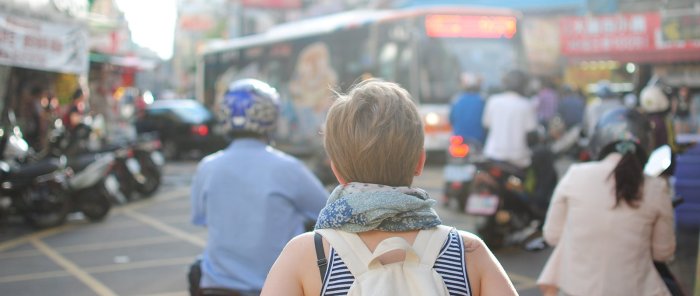
Traveling safely involves more than just planning and preparation; it also necessitates meticulous documentation and a clear process for reporting any incidents. Proper documentation not only aids in resolving issues quickly but also provides valuable evidence in case of emergencies or disputes. A well-maintained record of your travel plans, contacts, and important documents is crucial for peace of mind and efficient assistance.Thorough documentation acts as a safety net, ensuring you have the necessary information readily available if things don’t go as planned.
This proactive approach helps to mitigate potential risks and streamlines the process of receiving assistance if needed. From recording your itinerary to storing crucial contact details, each step contributes to a more secure and organized travel experience.
Importance of Documenting Travel Plans and Itineraries
Detailed travel plans and itineraries are not just helpful; they are essential for personal safety. They serve as a reference point for authorities and emergency contacts, providing them with critical information about your whereabouts and schedule. Having a documented itinerary enables faster response times in case of emergencies, as rescuers or authorities can quickly pinpoint your location and planned activities.
This proactive measure can be the difference between a smooth resolution and a prolonged ordeal.
Creating a Personal Safety Plan
A personal safety plan is a personalized strategy outlining precautions and emergency procedures tailored to your specific travel needs. It should include contact information for emergency contacts, a detailed itinerary, and important document copies. This plan acts as a guide, ensuring you have a clear roadmap for handling various situations.
- Emergency Contacts: List all essential emergency contacts, including family members, friends, and local authorities. Include their phone numbers and email addresses. This is crucial for immediate support if needed.
- Detailed Itinerary: Include specific dates, times, locations, and planned activities for each day of your trip. Note any changes to your schedule as they occur.
- Important Documents: Include copies of your passport, visa, driver’s license, and travel insurance information. Keep these copies separate from the originals to avoid losing all your documents in a single incident.
- Emergency Procedures: Artikel your emergency procedures in case of loss, theft, or injury. Specify the steps you will take to notify your contacts or seek assistance.
Procedures for Reporting Incidents or Emergencies
Having a well-defined procedure for reporting incidents or emergencies is crucial for swift action and efficient resolution. This involves knowing the local authorities’ contact information, understanding the reporting channels, and outlining the steps to take in various scenarios.
- Local Authorities: Research and note down the contact details for local police, hospitals, and embassies. This information is vital for immediate assistance in case of an emergency.
- Reporting Channels: Familiarize yourself with the local reporting channels for different types of incidents. This may involve calling a specific number, filing a report online, or contacting a specific agency.
- Documentation of Incidents: In case of an incident, document the details, including time, location, and any witnesses. This information can be crucial for investigations and reporting purposes.
- Contacting Emergency Contacts: Notify your emergency contacts about the incident to keep them informed and prepared to assist.
Documentation Template
This table provides a structured format for organizing your important travel documents.
| Document | Information | Copies |
|---|---|---|
| Passport | Passport number, expiry date, photo | 2 or more |
| Visa | Visa number, expiry date, purpose | 2 or more |
| Travel Insurance | Policy number, contact details, coverage | 1 or more |
| Flight/Train Tickets | Booking details, confirmation numbers | 1 or more |
| Hotel Reservations | Booking details, contact information | 1 or more |
| Emergency Contacts | Name, phone number, email | 1 or more |
Ending Remarks
Ultimately, traveling safely involves a combination of preparation, awareness, and responsible decision-making. By following the tips and strategies Artikeld in this guide, you can significantly enhance your safety and enjoy your travels worry-free. Remember, being proactive and informed is key to a smooth and secure journey.
